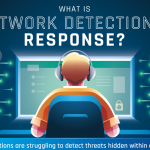Scammers turn to AI to improve their campaigns

The latest quarterly Consumer Cyber Safety Pulse Report from Norton looks at how cybercriminals can use artificial intelligence to create more realistic and sophisticated threats.
Tools like ChatGPT have captured people's attention recently and it seems cybercriminals have noticed them too. Its impressive ability to generate human-like text that adapts to different languages and audiences also makes it great for generating malicious threats.
Smooth integration is a challenge for machine learning professionals

A new survey of 200 US-based machine learning decision makers looks at the trends, opportunities and challenges in machine learning and MLOps (machine learning operations).
The study from ClearML finds that for 41 percent, the biggest challenge of their MLOps platform, tools, or stack, is friction in using tools with other technology. While 22 percent cite vendor lock -- difficulty switching to a different provider without significant costs, time, or disruptions -- as the biggest challenge.
Developer interest in AI and deep learning grows

New research from O'Reilly, looking at the most sought-after technology topics consumed by the 2.8 million users on its online learning platform, shows that there's been a 42 percent increase in interest in AI.
Interest in deep learning showed a 23 percent increase. Developers also increasingly searched for content related to transformers -- the AI model that's led to tremendous progress in natural language processing -- reflecting the impact of advancements in Open AI's GPT-3 and ChatGPT and the anticipation for upcoming offerings from Google, Meta, and others.
IBM and OWASP announce projects to help secure the software supply chain

The OWASP Foundation (Open Web Application Security Project) and IBM have today announced IBM’s contribution of two open source projects aimed at increasing trust across open hardware and software supply chains.
The two projects are SBOM Utility and License Scanner, which add to CycloneDX, a flagship OWASP project and a leading Bill of Materials (BOM) standard. These promote validation, content analysis and accuracy of software license information included within BOMs.
Half of enterprises have publicly exposed SaaS assets

A new report finds that 50 percent of enterprises and 75 percent of mid-sized organizations have exposed public SaaS assets.
The report from security platform DoControl shows that large and medium companies have an average of 5.5 million and 1.5 million assets stored in SaaS applications respectively, illustrating the challenge IT and SecOps teams face daily in securing the intellectual property those assets contain.
Over 30 percent of mobile users encounter phishing attacks

According to data from Lookout, 2022 has seen the highest percentage of mobile phishing encounter rates ever, with an average of more than 30 percent of personal and enterprise users exposed to these attacks every quarter.
Since 2021, mobile phishing encounter rates have increased by around 10 percent for enterprise devices and more than 20 percent for personal devices.
Welcome to Twitter, who are you again?

If you've visited Twitter this morning you may have found that the platform appears to have forgotten that you exist.
Users around the world are being presented with a friendly 'Welcome to Twitter' message urging them to find some people to follow, despite having been on Twitter for years and already following hundreds of people.
Is it worth paying for an enterprise browser? [Q&A]

Why would you pay for a browser when all of the popular ones are available for free? If you're an enterprise it could be because a paid browser can address some key problems.
We spoke to CEO and co-founder of enterprise browser specialist Island, Mike Fey, to find out more about this category and what benefits it can offer.
Known vulnerabilities pose the biggest threat

Known vulnerabilities for which patches have already been made available are the primary vehicle for cyberattacks, according to a report released today by Tenable.
The Tenable Research team analyzed cybersecurity events, vulnerabilities and trends throughout 2022, including 1,335 data breach incidents publicly disclosed between November 2021 and October 2022.
88 percent of organizations have suffered cyber breaches in the last two years

A new survey of 300 CIOs, CISOs, and security executives from enterprises across Europe and the USA shows that 88 percent of organizations admit to being compromised by a cyber incident over the past two years.
The study from Pentera reveals that this is despite organizations having an average of almost 44 security solutions in place.
Threat actors move beyond ransomware to exploit new (and old) techniques

Cybercrime actors are shifting away from ransomware to new, innovative techniques, according to the latest CrowdStrike Global Threat Report released today.
The report shows 71 percent of attacks detected in the last year were malware-free (up from 62 percent in 2021) and interactive intrusions (hands on keyboard activity) increased 50 percent in 2022. This shows how sophisticated human adversaries are increasingly looking to evade antivirus protection and outsmart machine-only defenses.
The challenges of network detection and response

Even as we've seen a shift towards remote working, networks remain the part of an organization that are most at risk from cyber attacks.
In a new infographic LiveAction looks at evolving network security challenges and how the right Network Detection and Response (NDR) solution can be used to tackle them.
Ethical web scraping and data rights [Q&A]

Web scraping, automatically harvesting and extracting data from websites, can be a useful tool for businesses to learn about their customers.
But it's easy to fall into the trap of harvesting data just because it's there, leading to information overload not to mention privacy concerns for the consumer. To find out more about web scraping and how it can be used in an ethical way we spoke to founder and CEO of Rayobyte, Neil Emeigh.
61 percent of Americans rely on free antivirus programs

A new report on the antivirus market from Security.org reveals that almost three-quarters of Americans still strongly believe computers need antivirus to protect their devices and 61 percent are relying on free options like Microsoft Defender.
The number relying on free solutions has held steady, down only one point since 2021. Interestingly, only eight percent of free antivirus users have experienced a breakthrough virus in the past year, compared to 10 percent of paid users.
Why SBOMs have become a vital element of supply chain risk management [Q&A]

In recent years, the software bill of materials (SBOM) has become a key element of software security and software supply chain risk management.
We spoke to Tim Mackey, head of software supply chain risk strategy at Synopsys to find out more about the benefits and challenges of SBOMs.
